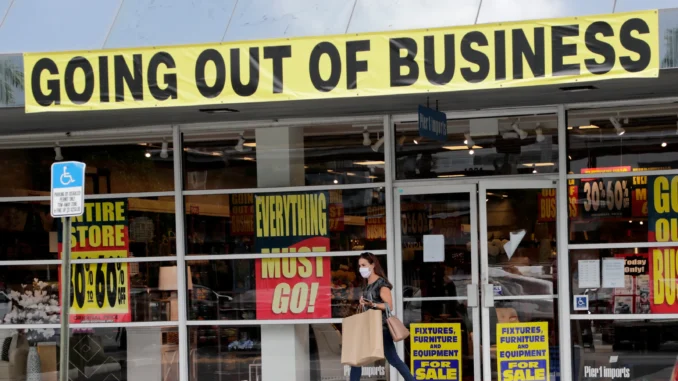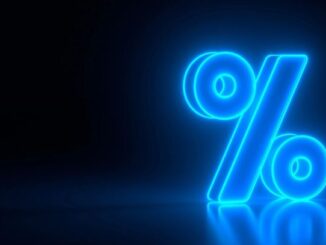
Geopolitical tensions, energy market imbalances, persistently high inflation and rising interest rates have many investors and economists concerned that a U.S. recession is inevitable in 2023.
The risk of recession has been rising as the Federal Reserve has raised interest rates in its ongoing battle against inflation. The recent bank crisis hasn’t helped either. While the U.S. economy is still growing, the rate of gross domestic product growth has been falling for the last three quarters and stood at 1.1% in the first quarter of 2023. It appears increasingly unlikely that the Fed will pull off a so-called soft landing for the economy this year.
Economic recessions are no reason for panic and have happened regularly over the past century. You can make the most of a difficult situation by knowing which risk factors to watch and how to position your portfolio to optimize performance in a tough market:
- 2023 recession risk factors.
- Will there be a recession in 2023?
- What to invest in during a recession.
2023 Recession Risk Factors
Many factors can trigger or contribute to a recession, but there’s no question that two specific factors are the biggest risk to economic stability in 2023.
Any investor who hasn’t been living under a rock is already aware that the primary economic risk factor in 2023 is inflation. Despite some relative progress, the core consumer price index – which excludes food and energy – gained 5.6% year over year in March. It’s good news that the figure is down from its 9.1% peak in June, but that’s still a far cry from the Fed’s goal of 2% inflation.
The Fed has taken an aggressive approach to combat inflation, but the best solution is also the second major economic risk factor in 2023: high interest rates. This scenario increases the cost of borrowing money, discouraging companies from taking on debt to invest in expanding their businesses. Elevated rates also reduce consumer spending, easing demand pressures that have contributed to rising prices.
Starting in March 2022, the Federal Reserve began implementing a series of aggressive interest rate hikes to target inflation. So far, the Fed has raised its fed funds target rate range from essentially zero to its current range of between 4.75% and 5%. Most analysts expect that to increase to between 5% and 5.25% at the next Fed meeting scheduled for May 3.
To make matters worse, the ongoing conflict between Russia and Ukraine has added to uncertainty, making it difficult to predict where the global economy is headed.
Will There Be a Recession in 2023?
Inflation and rising rates have not yet dragged the U.S. economy into the red. In addition to modest first-quarter GDP growth, the U.S. added 236,000 jobs in March, and the unemployment rate remains historically low at just 3.5%.
But investors should continue to monitor the labor market as interest rates rise. The market is currently pricing in about a 60% chance that the Fed will hold interest rates at their May levels through July’s Fed meeting, according to the CME FedWatch Tool. The outlook is mixed beyond that date, with a slightly stronger chance that target rates will begin to taper off and eventually retreat through the second half of the year.
According to The Conference Board, the probability that a recession will happen within the next 12 months is about 99%. In an article published in mid-April, the think tank said it expects a recession “starting in mid-2023” after increasing economic weakness, with the second quarter expected to be the first of three consecutive negative-growth quarters for GDP this year.
Morgan Stanley said in a post on its website in late March that the banking crisis has increased the risk of recession. “Concerns about financial stability could force the Fed to drop its inflation-fighting efforts prematurely,” it said, which could cause stagflation.
Not all observers agree on how high the risks are, however, and Jan Hatzius, chief economist at Goldman Sachs, said there is a 35% chance of recession in the next 12 months. While that was revised upward from the bank’s previous 25% figure in light of the banking upheaval, Hatzius doesn’t expect the Fed to cut rates in response. Instead, he sees tightening credit conditions as the main factor that could push the economy to contract.
What to Invest In During a Recession
There are several general strategies investors can use to manage risk and take advantage of opportunities during a recession.
First, consider reducing exposure to volatile stocks and increasing cash holdings. Cash may not be the most exciting play, but it reduces market risk and provides financial flexibility if a recession creates potential buying opportunities in 2023. In addition, investors can earn 3% interest or higher in an online savings account right now, and those rates will only continue to rise if the Fed issues more rate hikes.
In addition, value stocks have historically outperformed growth stocks during periods of elevated interest rates. Higher interest rates harm companies’ discounted cash flow valuations, which can hurt high-growth stocks.
Certain stocks and market sectors are more defensive than others and tend to outperform the rest of the market during recessions. Utility stocks, health care stocks and consumer staples stocks are considered defensive investments because their earnings tend to be insulated from economic cycles and swings in consumer confidence.
In addition, certain individual stocks have outperformed during each of the past two U.S. recessions. Walmart Inc. (ticker: WMT), Abbott Laboratories (ABT) and Home Depot Inc. (HD) are just three examples of stocks that beat the S&P 500 in both 2008 and 2020.
Callie Cox, U.S. investment analyst at eToro, says investors should also take advantage of a potential recession in 2023 and prepare their portfolios for the light at the end of the tunnel in 2024 and beyond.
“Markets look ahead, and that means you could benefit from looking ahead to the next cycle when it comes to your portfolio,” Cox says. “Think about what sectors do well early on in an economic recovery: financials, real estate and technology.”
Investors can take a diversified approach to these three market sectors by buying S&P 500 sector exchange-traded funds, or ETFs, such as the Financial Select Sector SPDR Fund (XLF), Real Estate Select Sector SPDR Fund (XLRE) and the Technology Select Sector SPDR Fund (XLK).
Source: money.usnews.com
ENB
Sandstone Group



